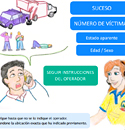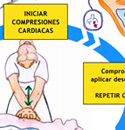 |
| Tanto golpea una gota de agua hasta que horada la piedra "Gutta cavat lapidem" Ovidio 43 BC - AC c17 Dripping water carves out caves of solid stone |
Por Pedro González Caro
Gota a gota el agua es capaz de abrir una piedra y no es por su fuerza sino por la constancia. Por eso los triunfos son de los que nunca se rinden.
Quise comenzar esta reflexión, con esta frase, porque siento que en ella existe una gran potencia conceptual. La palabra “constancia” tiene dos acepciones, una asociada a la acción y efecto de dejar algo claramente establecido, por ejemplo dejar constancia de los hechos ocurridos, dejar constancia de un resultado o de una relación de trabajo. Sin embargo, su principal significado y al cual quiero referirme es al valor y la cualidad que poseen algunas personas en cuanto a ser perseverantes y determinados ante un propósito o decisión. Por tanto, se considera que una persona es constante cuando es responsable y trabaja arduamente en lograr sus metas.
La lucha por la libertad es una decisión que tomamos, el libre albedrío es la potestad que el ser humano tiene de obrar según considere y elija. Esto significa que las personas tienen naturalmente libertad para tomar sus propias decisiones, sin estar sujetos a presiones, necesidades o limitaciones, o a una predeterminación de ninguna naturaleza.
La libertad es un derecho natural de la persona. Gracias a la libertad podemos realizar aspiraciones: un mejor nivel de vida, formar a los hijos para que aprendan a tomar mejores decisiones, buscar un lugar adecuado para vivir, participar de manera activa en beneficio de la sociedad, llevar una vida congruente con la moral y la ética en todo el quehacer profesional, buscar una educación de calidad.
Estos son los efectos de la libertad, no la libertad misma. La libertad puede entenderse como la capacidad de elegir responsablemente. Esta responsabilidad implica conocer lo bueno o malo de las cosas y proceder de acuerdo con nuestra conciencia; este es “el valor de la Libertad” de otra manera, se reduce el concepto a una mera expresión de un impulso o del instinto.
En este proceso de análisis, han surgido nuevos elementos conceptuales que quisiera comentar, “Valor” y “Responsabilidad”. Reflexionemos un poco en relación al Valor. El valor es una cualidad que confiere a las cosas, hechos o personas una estimación, ya sea positiva o negativa. Los valores son características morales inherentes a la persona, como la humildad, la responsabilidad, la piedad y la solidaridad. También podemos comprender a los valores como un conjunto de ejemplos que la sociedad propone en las relaciones sociales. Decimos que alguien tiene “valores” cuando establece relaciones de respeto con sus conciudadanos y que esos valores son creencias compartidas por la cultura social y que surgen del consenso social.
Por otro lado, el término Responsabilidad. La palabra responsabilidad contempla un abanico amplio de definiciones. De acuerdo al diccionario de la Real Academia Española (RAE), hace referencia al compromiso u obligación de tipo moral. Toda decisión se enfrenta a la consideración de lo bueno y lo malo, del beneficio o el perjuicio de una acción. Si no se realiza este juicio se puede incurrir con facilidad en un error pues se hace un uso irresponsable de la libertad. Al igual que en otros aspectos de nuestra vida, el abuso se convierte en un actuar conforme a nuestros impulsos, sin reconocer barreras, límites, moral o ética, es decir, se convierte en libertinaje. El mal uso o abuso de este derecho, siempre tendrá repercusiones en nuestros semejantes
Ya está más que dicha y comprobada la dificultad que significó para todos nosotros en general y a cada uno en particular, el año 2020. Los estudios que hemos desarrollado en el Centro de Estudios Políticos y de Gobierno, dan cuenta de que el año 2021, no será diferente con el agravante de que se perdió el bastión de la democracia que representaba para la sociedad democrática la Asamblea Nacional.
Las circunstancias que atraviesa Venezuela exigen respuestas casi inmediatas frente a los abusos y arbitrariedades del régimen. Sin embargo generar respuestas irreflexivas o impulsivas nos empuja al riesgo de perder la brújula, el norte, que guía la resistencia cívica, ordenada y disciplinada al régimen y con ello, caer en la trampa de la anarquía. La situación política y social, exige para Venezuela un momento de repensar. Líderes democráticos y ciudadanos tienen un mandato de la democracia, para reencontrar caminos, valorar alianzas y conductas, forjar responsablemente la unidad frente a un propósito superior.
Este es un trabajo de hormiga que no ofrece a primera vista la retribución inmediata que uno eventualmente esperaría. Mis hijos emigraron de Venezuela, mis nietos nacieron en tierras lejanas. Sin embargo, lo que prevalece, es mi deseo de hacer una humilde contribución para la construcción de una sociedad justa con igualdad de oportunidades para todos donde, los ciudadanos se reconozcan entre sí, más que por el color de su partido, por las características humanas que nos identifican como venezolanos y que ese reconocimiento sea un “palíndromo” como es la lectura del verbo RECONOCER.
El éxito no se alcanzará solo por la constancia como la gota que rompe la piedra sino por el orden y la disciplina que pongamos en ello. De lo que hablamos es de mantener la disciplina en la búsqueda estratégica de un Objetivo que solo podrá ser alcanzado en la medida en que nuestras acciones estén sistemáticamente ordenadas y cumplidas en forma coherente, porque la mayor fortaleza de un pueblo, frente a organismos opresores, está en la unidad de acción colectiva, basada en la decisión individual de vivir en democracia.
Es imperativo reconstruir la propuesta democrática como Proyecto de país para encontrar en él, el nuevo espacio de encuentro y de reconciliación de las fuerzas democráticas, pero fundamentalmente debemos valorar nuestra capacidad para poder llevar adelante esta “idea”, y finalmente ganar la gobernabilidad necesaria para poder cumplirla
Mi motivación principal para mantenerme vinculado a esta lucha, por la democracia y la libertad, es fundamentalmente mi deseo de contribuir brindando herramientas de análisis que le permitan a cada ciudadano, desarrollar a plenitud todas sus capacidades para administrar y decidir con equidad y justicia; pero fundamentalmente generar espacios de discusión orientados a la reflexión sobre la responsabilidad de cada uno con el futuro del país y sobre todo de la Nación.
Quisiera finalizar estas líneas con una invitación a todos quienes estamos enfrascados en esta lucha, para que no nos dejemos vencer por la adversidad, y que nos convirtamos en esa gota que, no por la fuerza sino por la constancia, ordenada y disciplinada, pueda ser capaz de abrir la piedra del autoritarismo, el abuso y la represión que representa este régimen oprobioso que gobierna a Venezuela y podamos recuperar la democracia y la libertad para las futuras generaciones.
https://politikaucab.net/2021/02/18/la-gota-que-rompe-la-piedra/
























